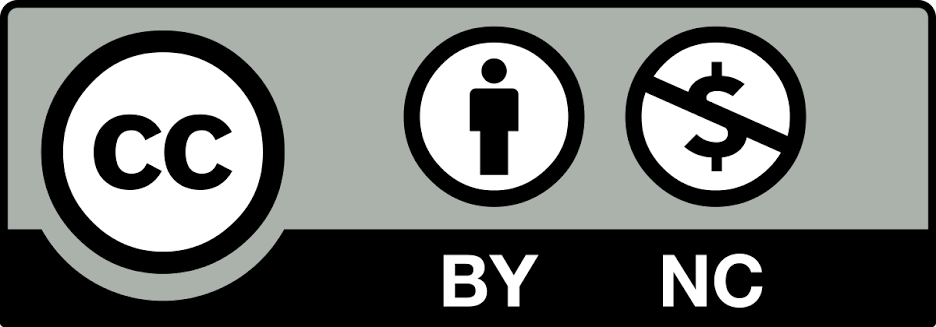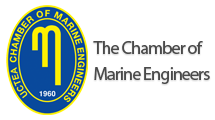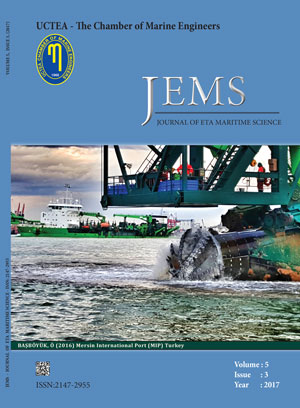

JEMS apply the Creative Commons Attribution NonCommercial 4.0 International Licence to all manuscripts to be published
ABSTRACTING & INDEXING
Volume: 5 Issue: 3 - 2017
| EDITORIAL (ED) | |
| 1. | Editorial Selçuk Nas doi: 10.5505/jems.2017.97659 Pages 218 - 219 Abstract | |
| FULL TEXT | |
| 2. | Journal of ETA Maritime Science (Volume: 5 Issue: 3, 2017) Pages 218 - 311 Abstract | |
| ORIGINAL RESEARCH (AR) | |
| 3. | Thermodynamic Properties of Unburned Reactant Mixtures for Different Kind of Fuels Hasan Kayhan Kayadelen doi: 10.5505/jems.2017.26918 Pages 220 - 232 Accurate estimation of adiabatic flame temperature and combustion product species play a key role in estimating performance and emission characteristics of internal combustion engines. This can be succeeded only with exact knowledge of temperature and thermodynamic properties of the unburned mixture. In this paper, thermodynamic properties of various fuels and fuel-air mixtures are presented. Differences in gas phase and liquid phase properties are discussed. Effect of equivalence ratio and unburned mixture temperature on enthalpy, specific heat and entropy of unburned fuel-air mixtures as well as effect of phase change on adiabatic flame temperature are shown. In order to serve as a recourse tool for researchers of combustion and internal combustion engines, the required polynomial coefficients used in calculation of thermodynamic properties are tabulated in famous NASA format for various important chemical compounds which are commonly used to represent surrogates of diesel, gasoline, Jet-A and many other fuels. |
| 4. | Analysis of the Effects of Welding Parameters on CO2 Gas Emission in Gas Metal Arc Welding of AH-36 Shipbuilding Steel with Metal Cored Wire Tolga Mert doi: 10.5505/jems.2017.74046 Pages 234 - 241 Welding is one of the leading joining techniques, which is often utilized, in shipbuilding, heavy industry and manufacturing sector. Since it can reach high manufacturing rates, offer ease of use compared with shielded metal arc welding and compatibility with automation, gas metal arc welding is one of the most preferred welding methods. Besides its technological advantages, welding process has some drawbacks. Welding fume emission is one of the most important disadvantages. In this study, welding of low carbon structural steel was performed by using metal cored wire applying gas metal arc technique at different welding parameters and CO2 gas emission was measured. The highest and lowest CO2 emissions in experiments, which were designed according to Taguchi, were obtained with 220 A and 200 A currents, 25 cm.min-1 and 25 cm.min-1 welding speeds, 20 mm and 15 mm electrode extensions, 18 L.min-1 and 10 L.min-1 flow rates, Ar+%20CO2 ve Ar+%5CO2 shielding gas mixtures, respectively. Effects of the welding parameters were examined using Taguchi and variance analyses and evaluated in terms of workers health and the environment. |
| 5. | The impact of Perceived Service Quality on Satisfaction: An Application on Marina Customers in Turkey Görkem Dikeç, Ali Cemal Töz doi: 10.5505/jems.2017.16878 Pages 242 - 257 The main purpose of this study was to investigate the impact of perceived service quality on customer satisfaction in marinas in Turkey. A total of 134 customers from eight marinas which were included in the sample have participated to the research. The impact of services that customers receive on perceived service quality levels was analyzed. This study mainly concludes that there is direct impact of quality of the services on customer satisfaction in marinas in Turkey. The results also show that the highest impact on customer satisfaction was reliability and competence, followed by management, planning and standards, and physical assets, respectability and environment. Furthermore, the study shows that foreign and Turkish customers have significantly different opinions on some service quality variables. In the future a more comprehensive study could be done during high season. In addition, the survey could include additional languages at other marinas, which would increase the sample size. Future studies could compare marinas in other countries. |
| 6. | Experimental Investigation of the Effects of Flexibility and Surface Properties on Slamming Loads in Water Entry of Cylinders and Spheres Fatih Cüneyt Korkmaz, Bülent Güzel doi: 10.5505/jems.2017.72692 Pages 258 - 270 This study investigates the slamming impacts experimentally considering the energy transfer from solid to fluid during slamming. Deformations on free water surface by solid objects entering water were observed and impact forces were measured via strain gauges at different entrance velocities. Experiments were conducted by using cylinders and spheres whose surfaces entrance angles into the water change at different depth levels. Free fall tests were designed to measure impact forces of the investigated shapes by immersing them into the water from a definite height and to investigate the relation of the energy transferred to the water with this force. The slamming coefficient, Cs is calculated from experimental results and then compared with analytical and numerical results. It is observed that the cylinder with ridged surface deforms the free water surface differently and this difference affects the slamming force as well. The effect of flexibility is also studied by using cylinders of different elasticity and it is shown that flexibility decreases the effect of slamming forces. |
| 7. | A Numerical Analysis of Exhaust Smoke Dispersion for a Generic Frigate Erinç Dobrucalı, Selma Ergin doi: 10.5505/jems.2017.13007 Pages 272 - 289 In this study, the effects of exhaust outlet temperature and yaw angle on the exhaust gas and emission dispersion for a generic frigate are investigated numerically. The conservation of energy, momentum, mass, species and turbulence equations have been solved by using the finite volume method. It is found that the exhaust smoke dispersion is affected by yaw angle, buoyancy and turbulence, as well as exhaust outlet temperature. The results show that the dispersion of the exhaust gases and the emission is affected adversely with increasing the yaw angle. It is defined that this phenomenon can be dangerous for the human health and the frigate. The momentum of the exhaust gases is rising slightly with increasing exhaust outlet temperature and the NOx concentrations tend to decrease volumetrically with exhaust outlet temperature. In this case, crew on the upper deck may be affected, adversely. The computations are validated with the flow visualization tests carried out in a wind tunnel. The agreement between the numerical and experimental results is found to be good. Furthermore, the exhaust gas dispersion is obtained analytically and the results are compared with the numerical results. |
| 8. | Determination of critical sediment accumulation zones in a ballast tank model Ceren Bilgin Güney, Devrim Bülent Danışman, Şafak Nur Ertürk Bozkurtoğlu, Fatma Yonsel doi: 10.5505/jems.2017.85570 Pages 290 - 299 Ballast tanks have a highly complicated geometric structure consisting of several interconnected sections where transverse and longitudinal strength elements are involved. Because of this structure of the tanks, sediment accumulates in various regions within the tank and can not be discharged. The accumulation of sediment in ballast tanks can cause many problems such as the transport of invasive species, tank corrosion and cost increase in ship operation. In this study, critical zones were experimentally determined in terms of sediment accumulation in a conventional tanker double bottom ballast tank model produced at laboratory scale. The results of the study show that sediment accumulation occurs intensively around the central line. The study was carried out within the scope of the "Ballast Tank Design to Reduce Sediment Accumulation" project supported by TUBITAK (project number: 115Y740). |
| 9. | Designing Intake Manifold of an Internal Combustion Engine Using Computational Fluid Dynamics Tolga Demircan, Zahir Emre Polat, Hasan Tahir Polat doi: 10.5505/jems.2017.73745 Pages 300 - 310 Today, internal combustion engines are widely used in many sectors such as automotive, marine, aviation, etc. They can be produced in single cylinders and small sizes for the automotive sector as well as in very large sizes for use on ships. Internal combustion engines are complex structures formed by joining multiple parts. In addition, the combustion inside the cylinder is a very quick and complicated reaction. Therefore, the power performance of the motor depends on multiple factors. One of the most important of these factors is approaching burning to ideal burning conditions. This is possible by mixing oxygen and fuel in the cylinder in a suitable ratio. For an engine to work at a high performance constantly, the fuel must be supplied continuously with sufficient air. The intake manifold is used for this air supply. Therefore, intake manifold design plays an important role for good combustion. For this purpose, in this study, the effects of the inlet angles of the intake manifold are discussed so that a sufficient amount of intake air can be supplied to a diesel engine. With the help of the Ansys Fluent package program, simulations were made for different manifold inlet angles and the effects of the inlet angles on flow characteristics were discussed. In the light of the results obtained from the simulations, velocity and pressure distributions in the manifold were obtained and optimum conditions were determined by outlet flow rate. |










